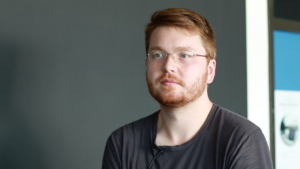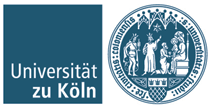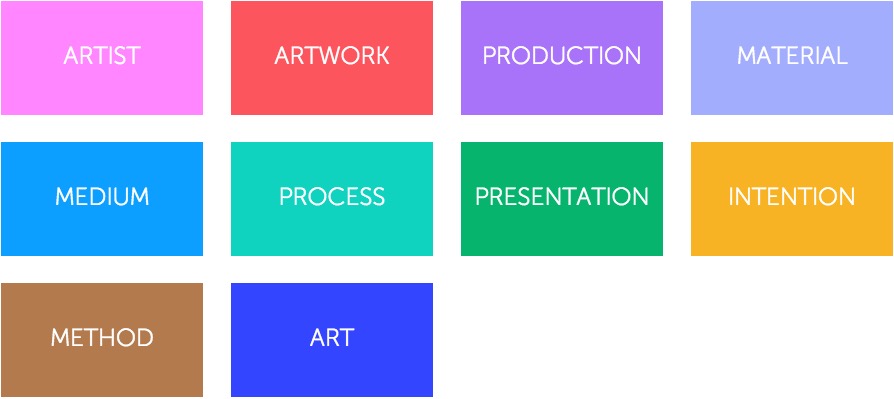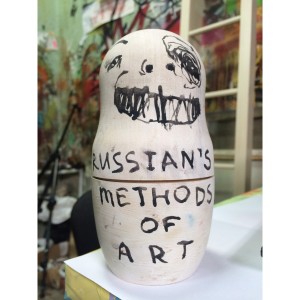I guess, a lot of the methods that I use to make my work are engaging with, like, a number of different things, usually whether that’s like software tricks or just like looking at new forms of fabrication or production, kind of coupled with an attempt to take, like, kind of a critical perspective towards the idea of production towards meaning or like materiality, I guess. And maybe being like critical, I suppose of the structures which produced those things. So, for example, like, I first, like, looked at intellectual property as a method of, like, both governing ideas but also a method of, like, constructing an expanded field for property, if that makes sense. Because it arises out of this, kind of like, need to create either a post-industrial class, basically, or to, like, fortify the very idea of being post-industrial, of saying, like, ironically, the methods are similar to how I produce my work which is maybe why I was interested in it. To say, like, I’m the pervader of this thing or whatever and yes, it’s like someone else makes it but, like, it’s still mine. Which both, which again kind of dovetails with the tradition of conceptual art, basically. So, trying to – I guess, like, the methods that I use then are, basically, trying to find both the boundary points and points of interstice between those things, between, like, how we make things and also how we think about them and, like, why we do, like, the rigid structures that construct that. One of the methods that I work with is as per using[?], using tools, especially software tools, that maybe have one meaning or one like very standard culturally use for using them either poorly or like a blunt object, basically. So, for example, like the spot brush in Photoshop, which is essentially a – it’s actually like quite interesting, on a – on an, like, an image or representational level because the spot brush you take or like the spot serves like clone tool, you take – I guess it’s clone brush – you take the, you either take like a piece from one image, you, like, sample an image source and then you, just like, you clone it, you use, you like redistribute the image data base free[?] over another surface and, you know, conceptually as a brush in the painting sense, that’s quite unique and interesting and the fact that it’s primarily used for, you know, removing like wrinkles from skin in photographs or something or just making someone look otherworldly and like not actually real, kind of almost looking non-human, is pretty interesting. Usually when people use it it’s, like, they take it tiny or relatively small, like clone brush is: you’re trying to, you’re trying to take part of for example skin that’s perfect and trace it over a part that’s not, basically, to make it all match. But when you bloat it up, when you take that tiny brush and make it huge, the results is – I don’t know – like quite – it’s like almost like an automatic tool for making like dadaist or like cubist work or something like that. Not that my work usually is that but to say that as a tool and that tool becoming like a method for working, basically. It kind of offers a possibility that is largely unexplored and specifically in the field of painting, I suppose.

















